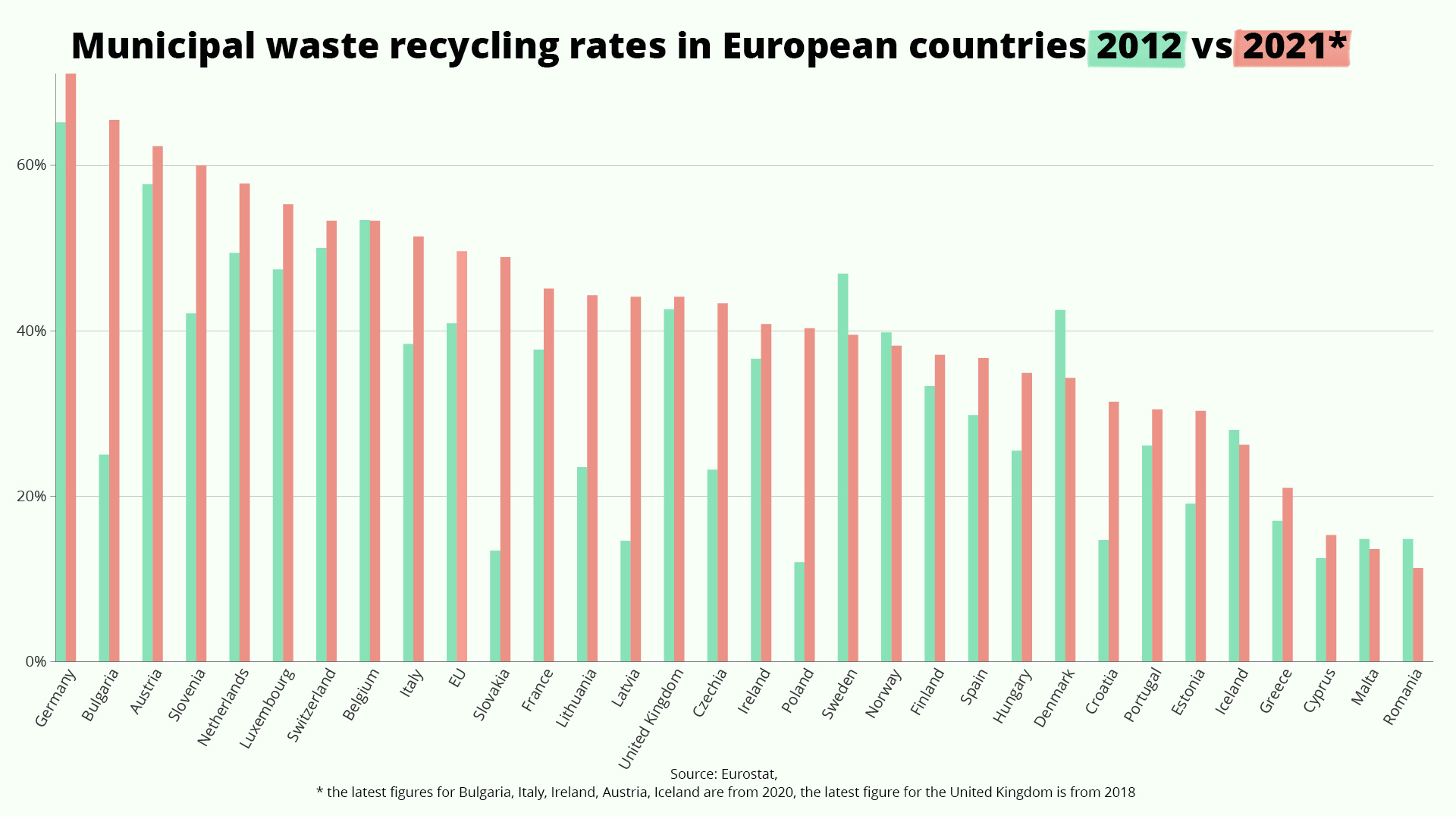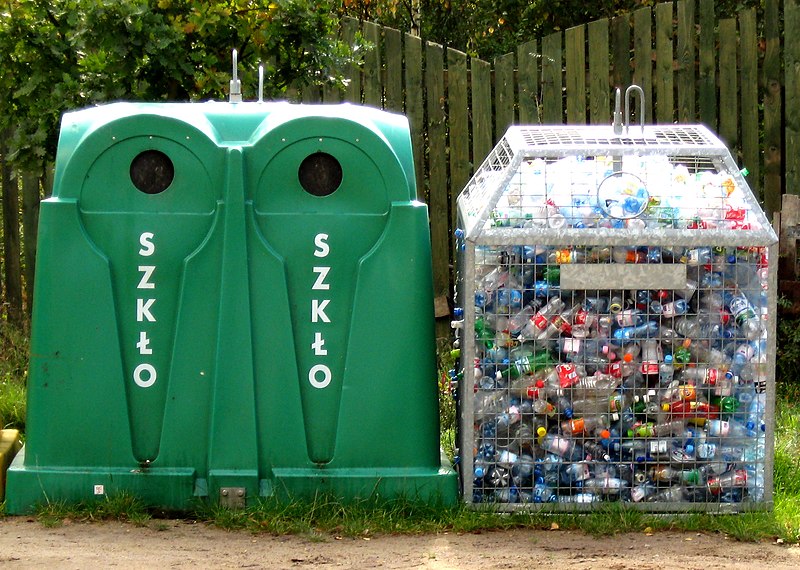Poland has recorded the European Union’s second-highest increase in recycling rates over the last decade, Eurostat data show. However, its rate still remains below the EU average.
The figures, compiled in a new report by waste removal company Clear it Waste, show that Poland’s municipal recycling rate rose from 12% in 2012 to 40.3% in 2021. That represented a rise of 236%, which was behind only neighbouring Slovakia (265%).
At the other end of the scale, Romania (-24%), Denmark (-19%) and Sweden (-16%) saw the largest declines in recycling rates over that period.

However, those figures show only the relative change in rates. In overall terms, Poland’s rate of 40.3% in 2021 was below the figure of 49.6% for the EU as a whole in that year.
The bloc’s top recyclers were Germany (71.1%), Bulgaria (65.5% in 2020, the latest year its data were available) and Slovenia (60.0%). At the other end of the scale, Romania (11.3%), Malta (13.6%) and Cyprus (15.3%) recorded the lowest results.

In July 2020, the EU’s waste management directive came into effect, requiring member states to recycle at least 55% of municipal waste by 2025, 60% by 2030 and 65% by 2035.
To adhere to these rules, since 2020 every city in Poland has been obliged to recover half of its municipal waste through recycling, with local authorities having the power to impose fines on those who do not properly sort their waste.
This month, industry and activist groups have also warned that Poland risks losing billions of zloty to EU charges by failing to introduce a promised deposit scheme for recycling bottles and cans. The government promised to do so by this year, but the plans have been delayed.
Delays in a new deposit system to encourage recycling will cost Poland billions in EU charges, industry figures and campaign groups have warned.
The government pledged to introduce the system this year but has still not approved the legislation https://t.co/oIb3zpMb6K
— Notes from Poland 🇵🇱 (@notesfrompoland) April 11, 2023
Main image credit: Tomasz Sienicki/Wikimedia Commons (under CC BY 3.0)

Anna Hackett is an assistant editor at Notes from Poland. She is a recent graduate of European Studies from Trinity College Dublin and has had previous journalistic experience with the Irish Independent News & Media group.




















